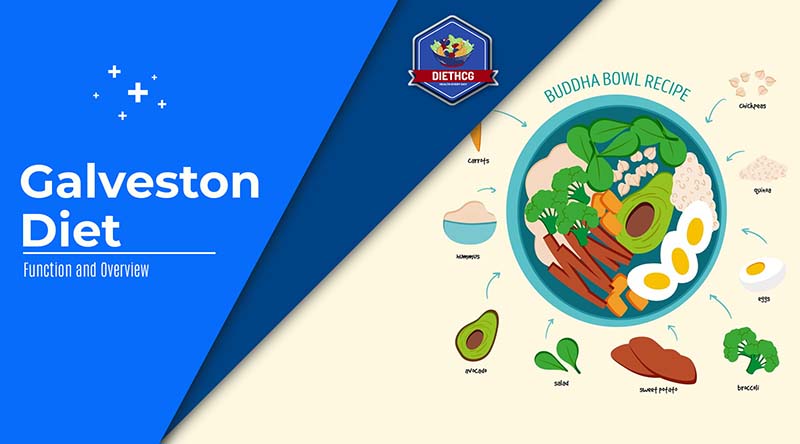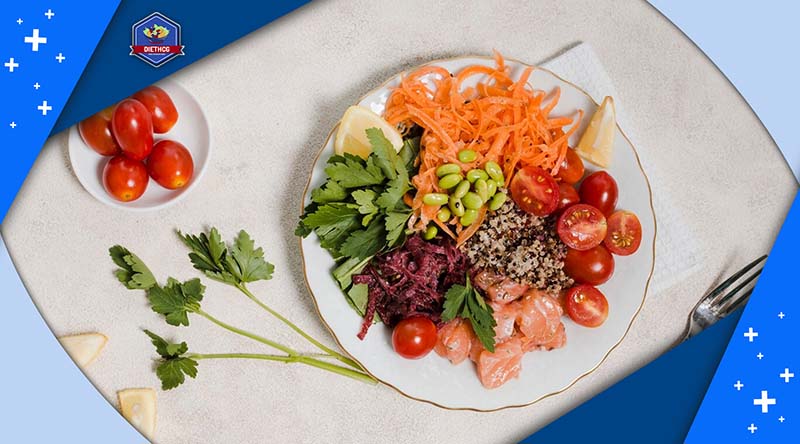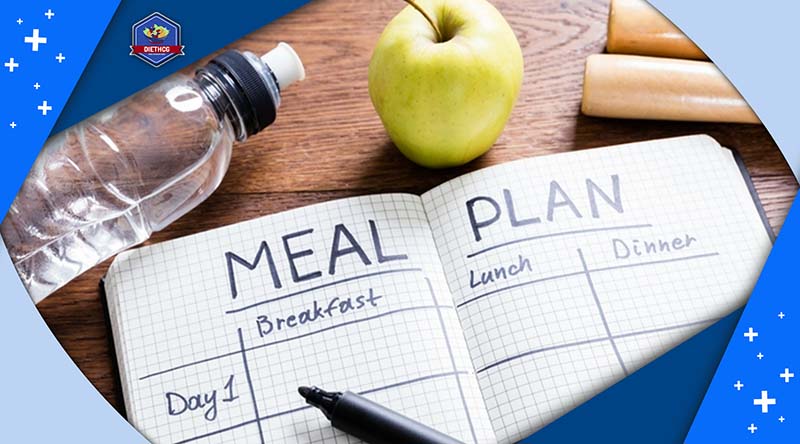Menopause often brings with it unwanted weight gain, a challenge attributed to hormonal changes, aging, and lifestyle habits. Dr. Mary Claire Haver, recognizing the shortfall in traditional dietary advice for this stage of life, crafted the Galveston Diet. This diet, designed specifically for women navigating the complexities of middle age, seeks to mitigate menopause-related weight gain. We invite you to explore the Galveston Diet on our website, DietHCG, where you’ll find comprehensive guides on suitable foods and practical tips, helping you decide if it’s the perfect match for your dietary needs.

1. What Is the Galveston Diet?
The Galveston Diet is a unique weight loss program created by Dr. Mary Claire Haver, a board-certified OB-GYN. The idea for this diet came from her own experiences. After menopause and the tough loss of her brother, Dr. Haver found herself trying to lose weight. She tried the usual approach of eating less and moving more but didn’t see the results she hoped for. This led her to question the old-fashioned view that weight loss is just about the calories you eat versus the calories you burn.
Dr. Haver came to understand that hormones play a big role in controlling our weight, and these hormones are greatly affected by what we eat. With this in mind, the Galveston Diet focuses more on the type and quality of food you eat and the timing of your meals, instead of just counting calories. It’s about eating the right foods that help balance your hormones, which can make a big difference in managing your weight, especially during and after menopause.

2. How Does the Galveston Diet Work?
The Galveston Diet is a strategic approach to weight loss that does away with the hassles of calorie counting and food weighing. Instead, it’s built on three core principles: shifting the type of fuel your body uses, incorporating intermittent fasting, and choosing anti-inflammatory foods. Here’s a closer look at how each part of the diet works:
Fuel Refocus: The diet is based on the understanding that our bodies use three main types of nutrients for energy: fats, carbohydrates, and proteins. Dr. Haver points out that unused glucose from carbohydrates gets stored as body fat. To combat this, the Galveston Diet encourages your body to use fat as its main energy source. This is achieved through a specific mix of these nutrients in your meals:
- 70% healthy fats
- 20% protein
- 10% carbohydrates
This approach starts off similarly to a ketogenic diet but then gradually increases carbohydrates and decreases fats to support long-term weight management, eventually aiming for a balance of 40% fat, 20% protein, and 40% carbohydrates.
Intermittent Fasting: Rather than focusing solely on what you eat, the Galveston Diet also sets guidelines for when you eat through intermittent fasting. Specifically, it recommends the 16:8 method, where you fast for 16 hours and eat all your meals within an 8-hour window each day. This strategy not only helps reduce your overall calorie intake but also encourages your body to burn fat more efficiently, which is particularly beneficial for managing menopausal weight gain.
Anti-Inflammatory Foods: Inflammation in the body can lead to weight gain and various health issues. The Galveston Diet emphasizes eating foods that lower inflammation, like vegetables and lean proteins, and avoid flooding your cells with simple carbohydrates such as sugars. These anti-inflammatory choices help regulate your immune system’s response and are linked to lower risks of chronic diseases and more effective weight management.
3. What Can You Eat on the Galveston Diet?
On the Galveston Diet, the main focus is on eating foods that reduce inflammation. This means selecting foods that are low in added sugars, minimally processed, and free from artificial colors, sugars, flavors, or preservatives. Including foods rich in omega-3 fatty acids, lean proteins, and plenty of fiber is also crucial. Plus, eating a variety of colorful fruits and vegetables ensures you get a broad spectrum of nutrients. There’s a wide range of foods you can enjoy on this diet, across all macronutrient categories:
Fats: For healthy fats, you have many options, such as:
- Avocado and its oil
- Coconut products like flakes, flour, and oil
- Flaxseed oil
- Full-fat milk
- Ghee
- Hummus
- MCT oil
- A variety of nuts and seeds, including sugar-free butters
- Olives and olive oil
- Sesame oil
- Tahini
Proteins: There’s a rich selection of proteins from both plant-based and animal sources:
- Uncured, nitrate-free bacon
- Various beans
- Lean meats like beef, bison, and venison
- Poultry including chicken, turkey, and others
- Dairy products such as Greek yogurt and a range of cheeses
- Fatty fish like salmon, trout, and tuna
- Full-fat kefir
- Legumes including lentils and chickpeas
- Plant milks and cheeses
- Pork with lean cuts
- Shellfish
- Tofu
Carbohydrates: When it comes to carbs, focus on a plentiful array of produce:
- Fruits like apples, bananas, berries, citrus, and more, though in limited amounts
- Non-starchy vegetables including leafy greens, cabbage, and peppers
- Starchy vegetables such as parsnips, peas, and sweet potatoes, also in moderation
- Whole grains including amaranth, barley, quinoa, and others, consumed in controlled quantities
The Galveston Diet encourages you to enjoy these foods while keeping an eye on overall consumption to ensure you’re following the plan’s guidelines for a balanced, nutrient-rich diet that combats inflammation and supports weight loss.
4. Is the Galveston Diet Good for You?
While there hasn’t been specific research focusing on the Galveston Diet itself, its core principles align well with what is widely considered a healthy eating approach. The diet’s strong emphasis on consuming whole, nutritious foods and reducing the intake of processed items and sugars lays a solid foundation for a healthy diet. This approach is backed by research indicating that inflammation plays a role in obesity. Therefore, increasing your consumption of anti-inflammatory foods such as fruits, vegetables, omega-3 rich fatty fish, nuts, and seeds, while cutting down on processed foods and sugars, can have positive effects on overall health and aid in weight management.
The practice of intermittent fasting, another component of the Galveston Diet, has been recognized as a potentially effective method for losing weight. However, the scientific community agrees that more detailed, long-term studies are needed to fully understand its benefits and risks. It’s also important to note that intermittent fasting may not be suitable for everyone, including people with diabetes, those on certain medications, or individuals with a history of eating disorders. Furthermore, it’s worth mentioning that in terms of weight loss, there is no conclusive evidence to suggest that intermittent fasting is more effective than maintaining a calorie deficit over time.
5. When Should You Follow the Galveston Diet?
The Galveston Diet is primarily designed for individuals navigating the metabolic shifts that often accompany midlife, with a particular focus on women going through menopause. This period can bring challenges such as weight gain, increased inflammation, and a slower metabolism. If you’re looking to address these specific issues, the Galveston Diet provides a targeted approach to help manage these changes effectively.
However, the benefits of this diet are not exclusively for those in midlife or undergoing menopause. It can also be a valuable option for anyone interested in enhancing their metabolic health, boosting energy levels, and lowering the risk of chronic diseases through improved dietary habits. The focus on anti-inflammatory foods, balanced macronutrients, and intermittent fasting can contribute to overall well-being and weight management across different age groups and life stages.
Before diving into the Galveston Diet, or any diet change, it’s crucial to assess your current health condition. This includes considering any existing health issues, dietary restrictions, and your body’s specific needs. Consulting with a healthcare provider can provide personalized advice and ensure that the diet aligns with your health goals and requirements. It’s about finding a sustainable and healthy approach that supports your body’s needs and your lifestyle.
6. Tips for Meal Preparation for a Balanced Diet
When you’re following the Galveston Diet, preparing meals that uphold a balanced diet is key. This diet places a strong emphasis on eating foods that fight inflammation, practicing intermittent fasting, and cutting down on sugar to help middle-aged women tackle menopause-related weight gain and symptoms. Here are some meal prep tips to help you stick to these principles:
6.1 Plan Ahead
Start by planning your meals for the week. Include a mix of fruits, veggies, whole grains, lean proteins, and healthy fats to keep your diet well-rounded. Planning ahead can help prevent last-minute unhealthy choices and ensure you have all the necessary ingredients for nutritious meals.

6.2 Choose Anti-inflammatory Foods
Add foods to your meals that are known for their anti-inflammatory effects, like berries, leafy greens, nuts, fatty fish (such as salmon and mackerel), olive oil, and spices (turmeric and ginger, for example). These foods can help reduce inflammation and promote overall health.
6.3 Prep Ingredients Early
Take some time to chop veggies, marinate proteins, and cook grains in large amounts ahead of time. Keep them in the fridge ready to go, making it easier to throw together balanced meals on the fly.
6.4 Watch Your Portions
If you’re doing intermittent fasting, pre-portioning your meals can be very helpful. It keeps your portions in check and ensures your meals are balanced, fitting into your eating window properly.
6.5 Healthy Snacks
Have healthy snacks ready to avoid grabbing sugary or processed foods. Options like veggies with hummus, a handful of mixed nuts, or yogurt with berries are great and in line with the Galveston Diet.
6.6 Stay Hydrated
Drinking plenty of fluids is essential, though it’s not just about meal prep. Water is best, but you can also enjoy herbal teas or water infused with lemon or mint. Staying hydrated is vital for overall health and can help curb hunger.
6.7 Batch Cook
Make meals in large quantities to save time later. Dishes like soups, stews, and casseroles are perfect for batch cooking. Just make sure the ingredients comply with the Galveston Diet’s anti-inflammatory focus.
6.8 Read Food Labels
Be vigilant about reading labels on packaged foods to steer clear of added sugars and preservatives, which can cause inflammation. The diet advises limiting processed foods to enhance health benefits.
6.9 Be Flexible
Allow some flexibility in your meal prep and eating habits. The aim is to create a way of eating that you can maintain long-term, without feeling too restricted.
6.10 Keep Learning
Continue learning about the Galveston Diet and general nutrition. Knowing the reasons behind the diet’s recommendations helps you make smarter food choices and better understand your dietary needs.
7. Conclusion
In conclusion, the Galveston Diet offers a strategic approach to managing menopause-related symptoms and weight gain through a focus on anti-inflammatory foods, intermittent fasting, and reducing sugar intake. By emphasizing whole, nutrient-rich foods and mindful eating practices, this diet aims to support middle-aged women in their journey towards better health and well-being.


